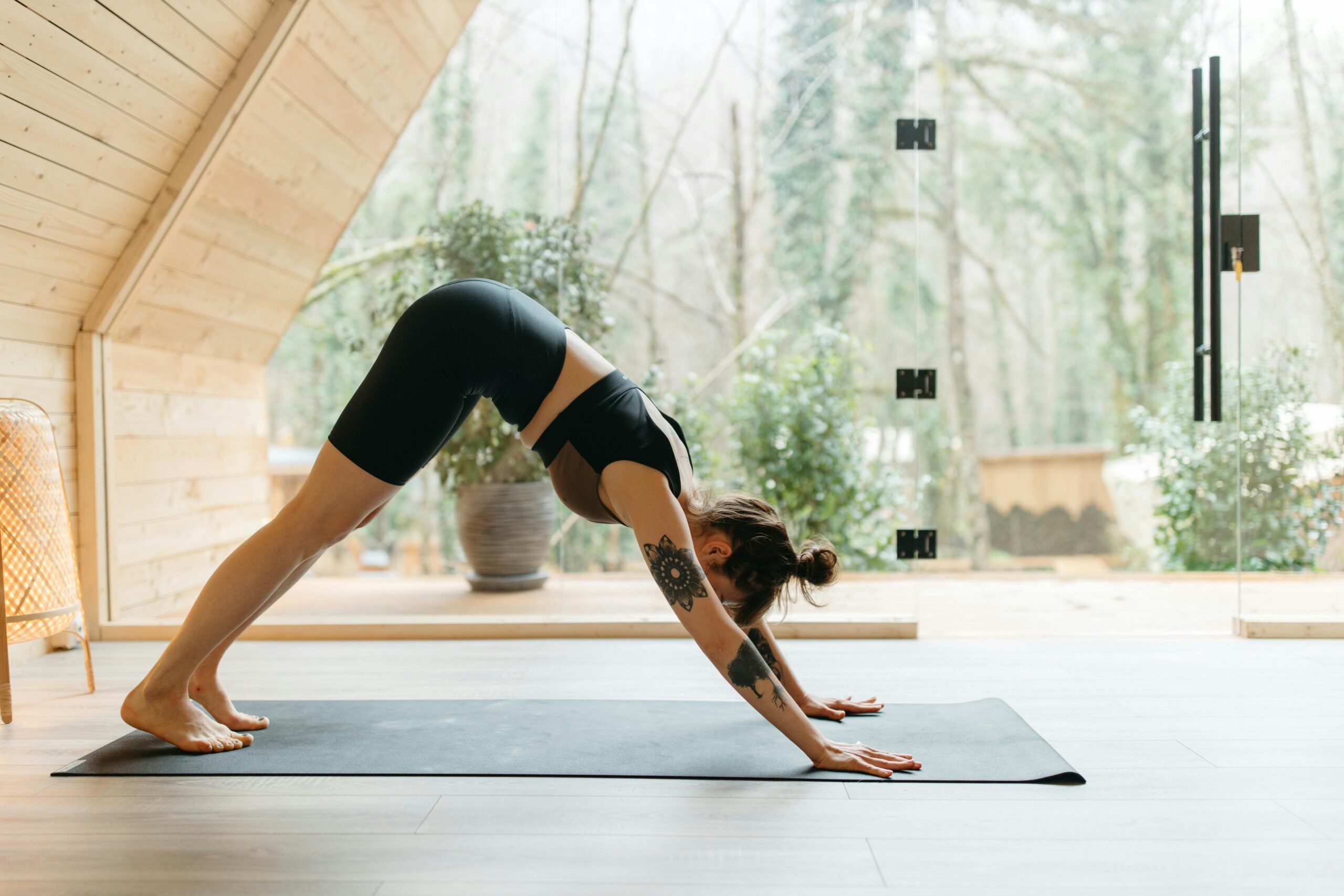8 Stretches to Make the First Down Dog of Class Less Intense

(Photo: Anastasia Shuraeva | Pexels)
There’s a pit of dread in my stomach. I awkwardly fidget, trying to balance my weight evenly between my hands and feet but inevitably paining my wrists or ripping my hamstrings seemingly in half. What should be an inverted V shape more closely resembles the upper half of a capital D, my legs the straight line and my back the rounded curve, too stiff to straighten. Even if I could do it, it doesn’t look quite right. “This is terrible,” I think.
This is my experience every damn time a yoga teacher cues the first Downward Dog of class. It’s accompanied, of course, by endless frustration.
There have been plenty of classes in which I quit Down Dog after that first miserable one. For the rest of the practice, each time Down Dog was cued, I’d come into Child’s Pose, Hero’s Pose, or literally anything else, for the sake of avoiding further discomfort.
It wasn’t until recently that I realized there’s often a reward for doing the hard thing on the yoga mat—in this case, an (eventually) satisfying stretch. I don’t know what came over me, but during class, I committed to coming into Down Dog every time it was cued and something kinda magical happened. It started to feel more comfortable, more fluid, and even more satisfying the more I practiced it.
The fact that a pose gets easier the more you do it may seem obvious. Still, I suspect I’m not alone in experiencing the stiffness, creakiness, and overall discomfort of the first Down Dog of class—which can feel physically and mentally discouraging.
Is there any way to make it easier?
Why Is the First Down Dog of Class So Intense?
Rest assured, it’s common to feel stiffness or tension in the muscles upon coming into the first Downward Dog of class. The pose calls for significant flexibility throughout the back body, including the calves, hamstrings, and lower back, explains Jenni Rawlings, a yoga teacher who focuses on anatomy and movement science. It can also be a demanding posture on the wrists. “This is typically less about wrist flexibility and more about those joints suddenly being asked to bear weight,” she says.
So why is it that the first Downward Dog can feel so restricted, whereas subsequent Dogs feel more doable? “As we move, our muscles contract, and muscle activity naturally generates heat,” says Rawlings. “That heat increases pliability and range of motion, which is why the very first Down Dog can feel stiff, whereas the later ones feel progressively more open and comfortable.”
“Going straight into a static Down Dog at the very beginning of practice can feel a bit abrupt for many students,” says Rawlings. “It’s not unsafe, but it may be less comfortable and not as supportive of that balance between effort (sthira) and ease (sukha).”
8 Stretches to Make the First Down Dog of Class Less Intense
If you’re seeking to avoid that first Down Dog discomfort, especially if you’re tending to tight hamstrings, hips, or wrists, Rawlings recommends practicing any or all of these mobility exercises on your mat before class.

1. Reclined Knee-to-Chest
Lie on your back with your legs straight. Bend one leg and draw your knee toward your chest, holding onto it with your hands. Stay here for a breath, then return your leg to the mat. Repeat on the opposite side, alternating between bending and straightening both legs.
2. Reclined Leg Reach-Ups
Lie on your back. Straighten one leg and draw the opposite knee toward your chest. Straighten your lifted leg, reaching your foot toward the ceiling until you feel a stretch in the back of your leg. Breathe here and then bend it again. Repeat several times, then switch sides.

3. Dynamic Squats (Malasana)
Stand with your feet hip-width apart or wider and your toes angled slightly outward. Bring your hands into prayer position (anjali mudra) at your chest. Lower your hips into Squat, then straighten your legs and return to standing. Repeat this several times, moving in and out of Squat.

4. Squat to Standing Forward Fold (Uttanasana)
From Squat, press your hands against the mat in front of you, and start to straighten your legs to come into Standing Forward Bend. Keep as much of a bend in your knees as you need. Shift between Squat and Standing Forward Bend several times.
5. Wrist Rocks in Tabletop
Come onto hands and knees. Shift your weight forward so your shoulders are in front of your wrists, then shift your weight backward so your hips sink toward your heels.

6. Cat-Cow
From your hands and knees. Inhale as you arch your back, lift your gaze toward the wall in front of you, and draw your shoulders away from your ears in Cow Pose. Exhale as you press your hands into the mat, lower your chin toward your chest, and draw your navel toward your spine in Cat Pose.

7. Bird Dog
From your hands and knees, simultaneously reach your right arm toward the wall in front of you and extend your left leg behind you. Picture a straight line from your right fingertips to your left heel. Breathe here, then switch sides.

8. Dynamic Down Dog
From your hands and knees, press your hands against the mat and lift your knees a couple of inches off the mat and hover for a breath or two. Return to your hands and knees. Or move between Plank and Downward Dog a few times, holding your position for less time than you would in your first Down Dog.